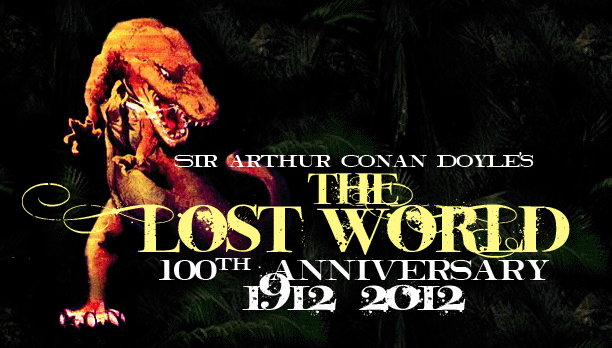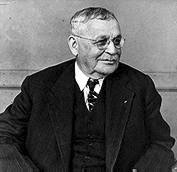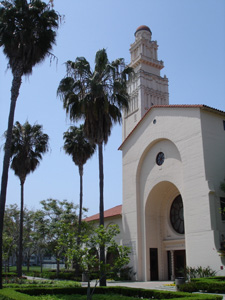

|
 After enjoying a stint on Vaudeville, Selig went on to found the Selig Polyscope Company in 1896 after purchasing and tinkering with the Lumiere brothers’ camera. One of the first filmmakers to make the move out to Southern California, Selig ran one of the prominent film companies until changing fortunes forced him to close his doors in 1918. In the mean time, he is well-known for having launched the careers of Rosco “Fatty” Arbuckle and western star Gilbert M. “Bronco Billy” Anderson. Selig also created a fully-stocked zoo, which served as a tourist attraction and a pool for animal actors.
 The storyboard, senario, synopsis and cast list discussed in this article currently sit as part of the William Selig Papers in the Special Collections of the Margaret Herrick Library of the Academy of Motion Picture Arts and Sciences in Beverly Hills, California. Beginning this website as a novice, gaining all my information from a wealth of publications by others, I was absolutely astonished when I stumbled across this material in the spring of 2006 on a trip to Los Angeles. In 9 years of researching this website, I had not once heard about this unmade William Selig version, and I have my doubts that anyone else has either. I very much consider it my privilege to be able to bring this piece of lost cinema history to light.
|
The story of The Lost World on the silver screen begins not with the 1925 silent film produced by First National Pictures, but rather, with an unrealized version first developed by film magnate William Selig. All that remains of the version of The Lost World that Selig intended to make is a synopsis, a scenario up to the end of the first reel, a potential cast list, and a handful of storyboards. Through these we can see a version that is very different from the novel but which is evolving towards the film that ultimately was made by First National.
The earliest of these documents is the synopsis – a brief summary of the main action of the film – and it shows the greatest divergence from Conan Doyle's text. In this synopsis, Professor Challenger returns from South America with documents from his deceased friend and fellow scientist Maple White proving the existence of a lost world where dinosaurs still reign. Ridiculed by the establishment, Maple’s daughter Gladys can't rest until she can vindicate her father. So troubled is she that she even refuses to marry her fiancé Eugene O’Brien until she returns from South America herself. While Summerlee and Challenger objectively debate the evidence for and against the existence of this lost world, Gladys partly criticizes and partly dares them to explore the land for themselves: You gentlemen of science giving your life to science are arguing only when my dead father has blazed a trail into a new yet ever old scientific world – he has opened a trail to knowledge belonging to the world – every word of his manuscript rings with modest truth – the truth lies within your grasp and I ask you as men do you dare?... How many dare follow where the manuscript of my dead father leads?The Challenger expedition set's off for South America and the action from that point on more closely follows that of the novel, with the notable exception of the nefarious Gomez. Gomez still betrays the party and strands them on the plateau, but is not summarily executed by Lord Roxton. Instead, he returns to England to the popularity and wealth reserved for the sole surviving member of a famously doomed expedition. In the heat of enjoying himself in the excesses of the Roaring 20's, the rest of the expedition returns from the lost world... Landing Gomez in prison and seeing to it that Gladys and Eugene are wed by nightfall. The first thing one notices is that the very earliest change made to The Lost World was the addition of a female love interest. Furthermore, from the very beginning that interest was cast as the daughter of Maple White... 1925's Paula White and 1998's Amanda White, and even the TV series' Veronica, are prefigured by Gladys White. She is herself a fascinating reversal of the Gladys character in the novel: rather than refusing to marry her paramour until he returns from an exciting expedition, she refuses to marry him until she returns. But the most fundamental change that this rendition of The Lost World makes is not to the story, but to the land itself. In a strange nod to Creationism, this world is literally antediluvian. Rather than being pushed up in prehistoric times by volcanic action, it was the dry centre of a whirlpool formed by colliding waters during Noah's global flood. Against the turmoil of a drowning planet, these monsters survived God's wrath to be found five or so thousand years later by the Challenger Expedition. The more elaborate scenario returns to a story that more closely resembles the novel and the later 1925 film. The appeasement to Creationism is long gone and the plateau is once again a plateau where the forces of evolution were brought to a standstill. Gladys White still figures in the story, but her fiancé is reverted to intrepid reporter Dunn Malone. The few storyboards illustrate some more familiar scenes as well. One has a Native girl sitting with Malone while a group of Dipolodocus graze in the valley below. Another has Malone fending off a Phorusrhacos. The most provocative, however, is the scene of the Allosaur being scared off by a torch, which looks almost exactly like the monster and the scene executed in the 1925 version. Also eerily reminiscent of the 1925 film is the proposed cast list that Selig put together. This list includes more than its share of familiar silent era stars, including Lon Chaney as Pedro, The Sheik’s Agnes Ayres as “Girl” and Lionel Belmore as Professor Challenger. Joing them were Lewis Stone as “Rexton” and Bull Montana as the Ape Man. There is no date on these papers, but a likely sequence of events can be inferred. The origins of the project could not postdate the beginning of First National's scripting and filming in 1922, so there is a strong probability that the rights and materials to The Lost World were up for purchase when Selig liquidated Polyscope's assets in 1918. At this point, yet another producer enters the story: J.G. Wainwright and Cineproductions. They obtained the rights to The Lost World from Conan Doyle in 1919 for £500, and this option was subsequently bought out by Rothacker in 1922. When advertizing the 1925 Lost World, First National stated that it was the culmination of 7 years of research and planning, which would place it at sometime around 1917 or 1918. That the cast list, storyboards and plot elements strongly resemble those that later turned up in the 1925 version is also suggestive. Though never realized as Selig envisioned it, his version left an indelible mark upon the 1925 version and upon the genre of dinosaur filmmaking as a whole. Review by Cory Gross.
|